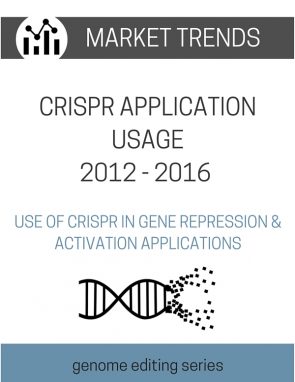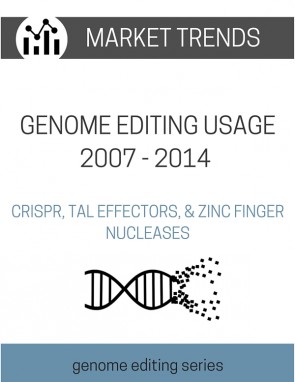Genome Editing
One of the instrumental methods of synthetic biology, today’s genome editing methods are poised to deliver on the promise of genetic engineering. Driven by the development and application of Zinc finger nucleases (ZFNs), Transcription Activator-Like Effector Nucleases (TALENs), and more recently by the CRISPR/Cas system, the field has seen a surge in research activity in recent years.
One of the fasted growing methods of synthetic biology, the CRISPR/Cas system is leading the pack of genome editing methods and poised to deliver on the promise of genetic engineering.
Since its introduction as a tool several years ago, researchers have been quick to use this robust editing tool in a range of applications including gene activation, knockin, knockout, and repression experiments.
Our Market Trends Dashboards capture the growth trends in the genome editing field and breaks it out by each of these methods, showcasing the relative usage of these technologies around the world in various institutions.
Our Research Profile Dashboards highlight the top institutions and labs using genome editing methods in their work. They represent the actual researchers beneath the trends highlighted in our Market Trends Dashboards. Together, these dashboards provide an unprecedented view of genome editing usage in labs worldwide.



